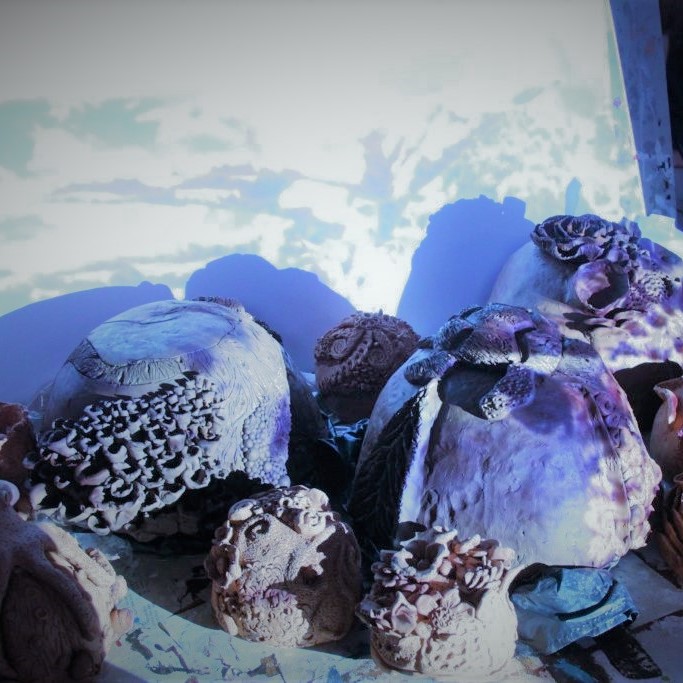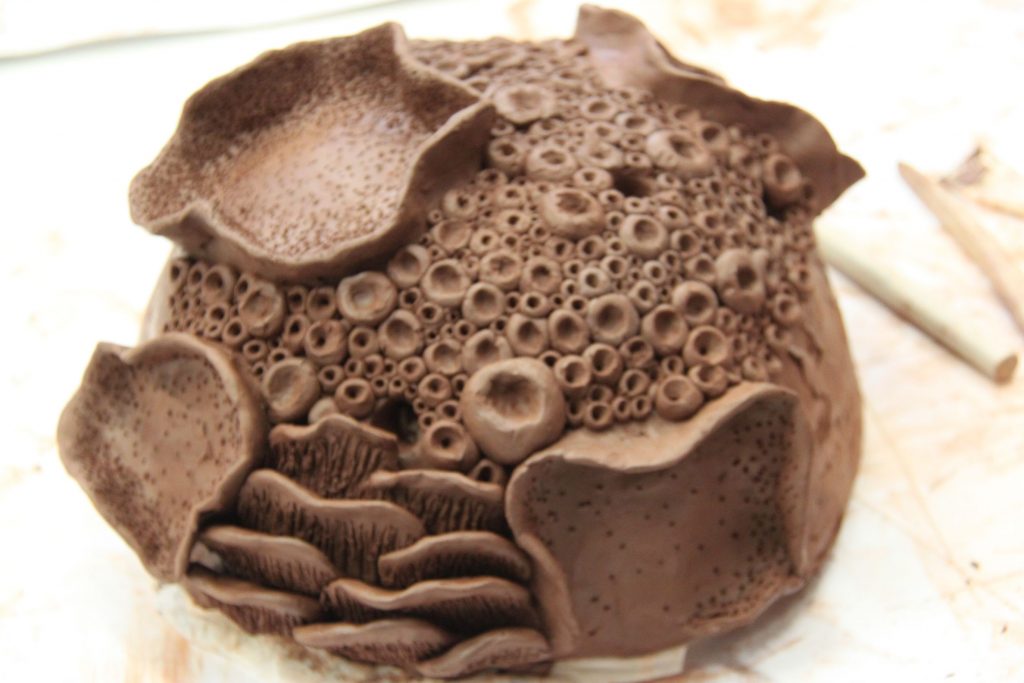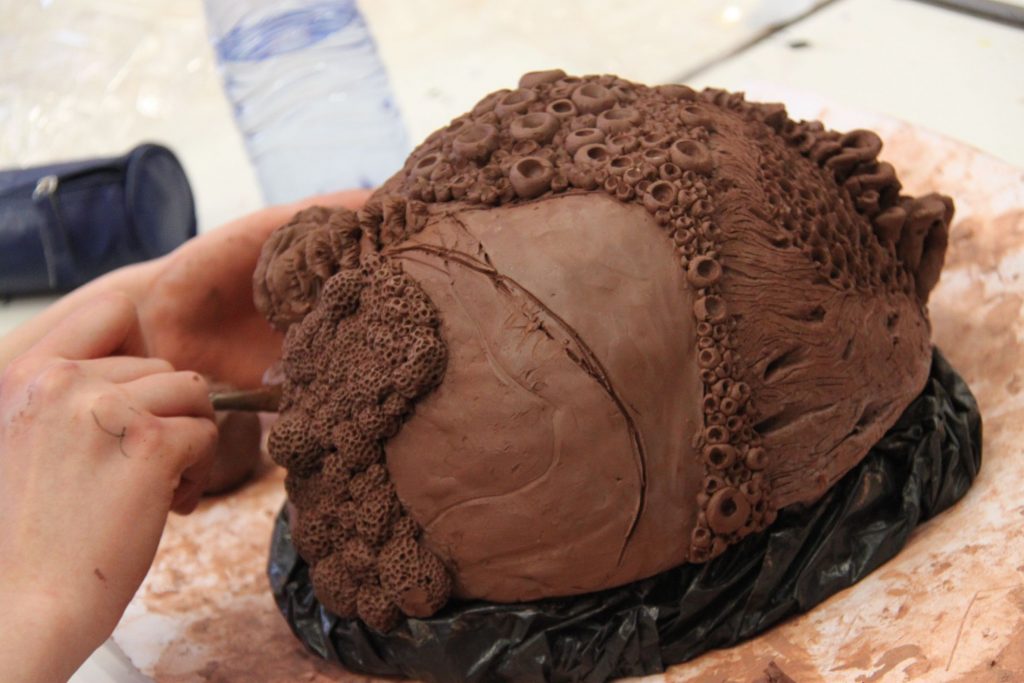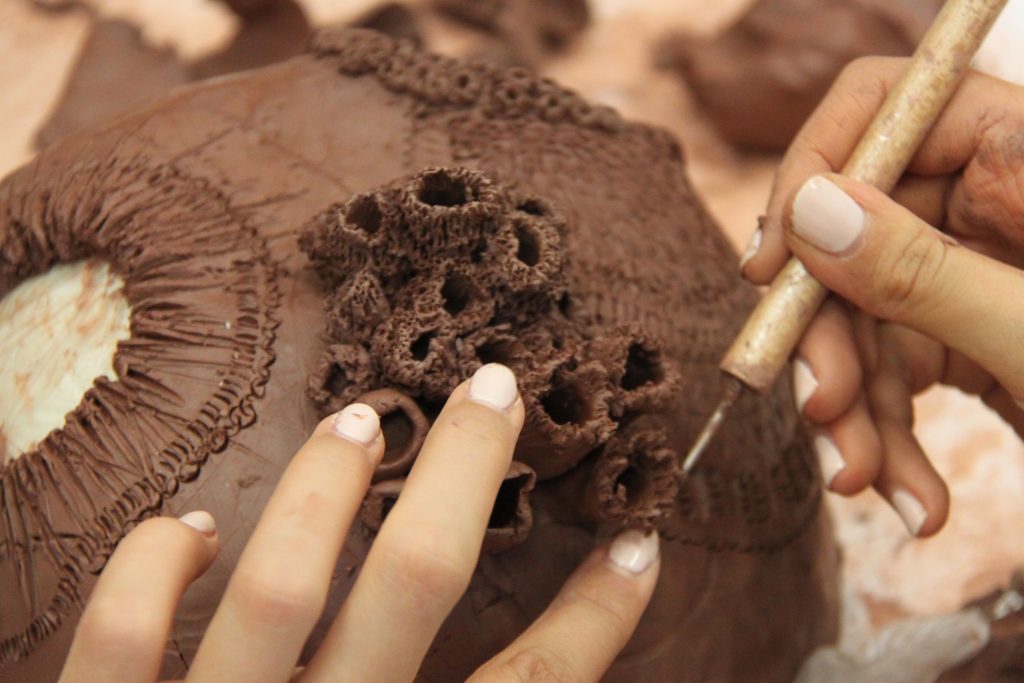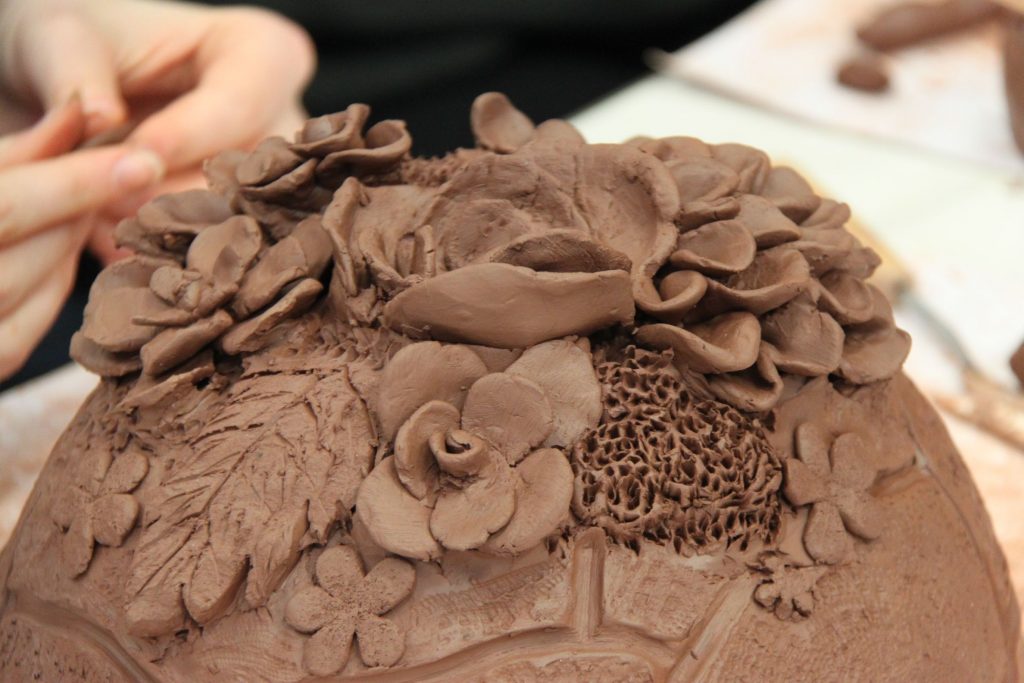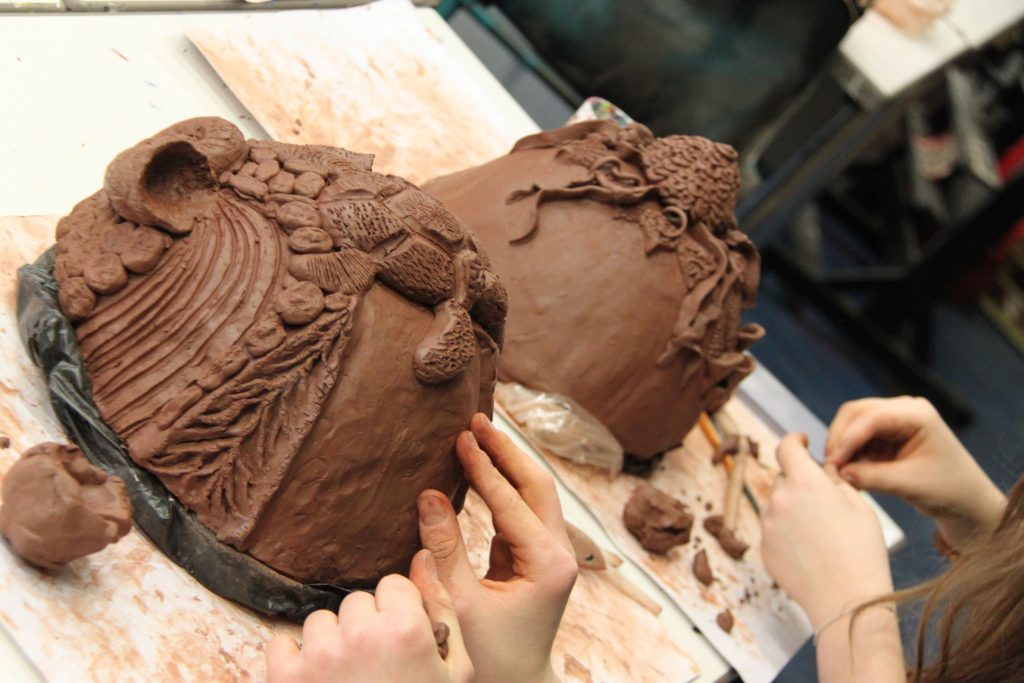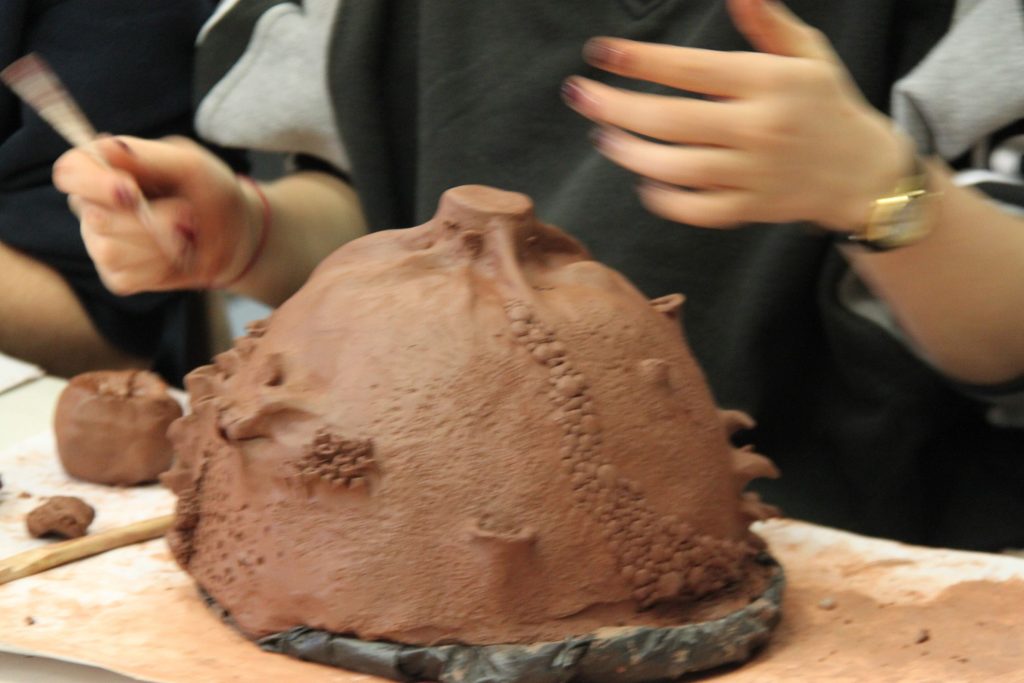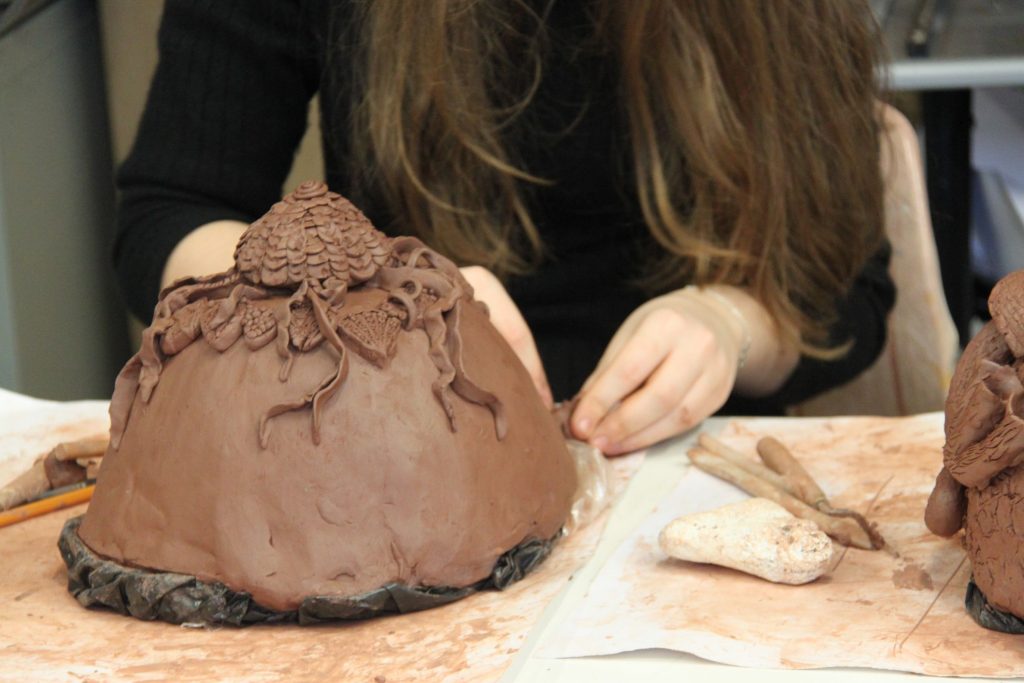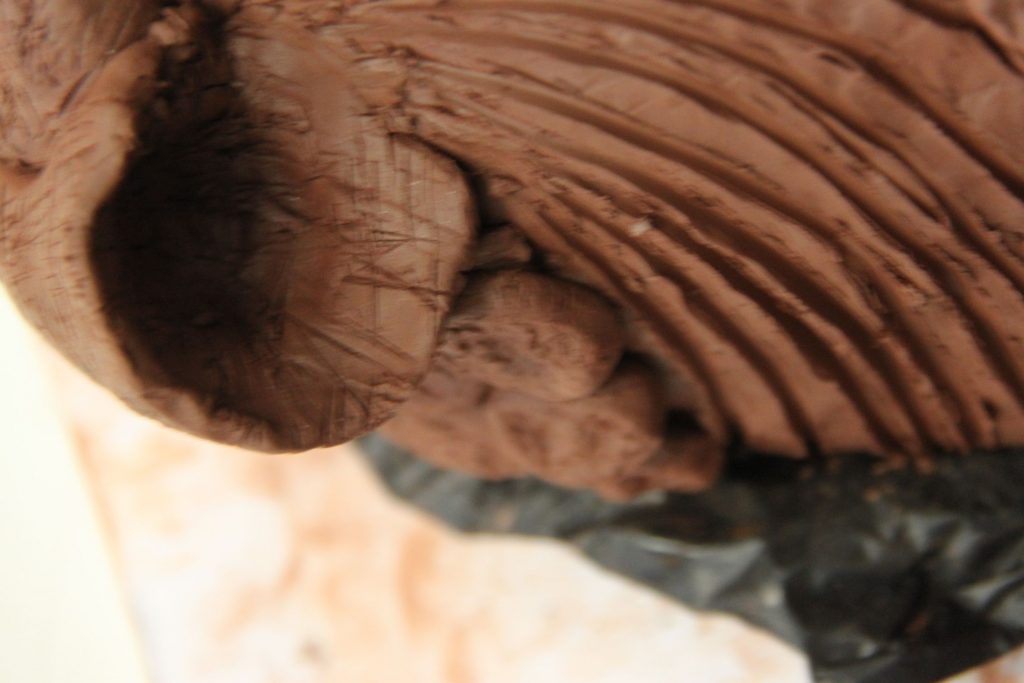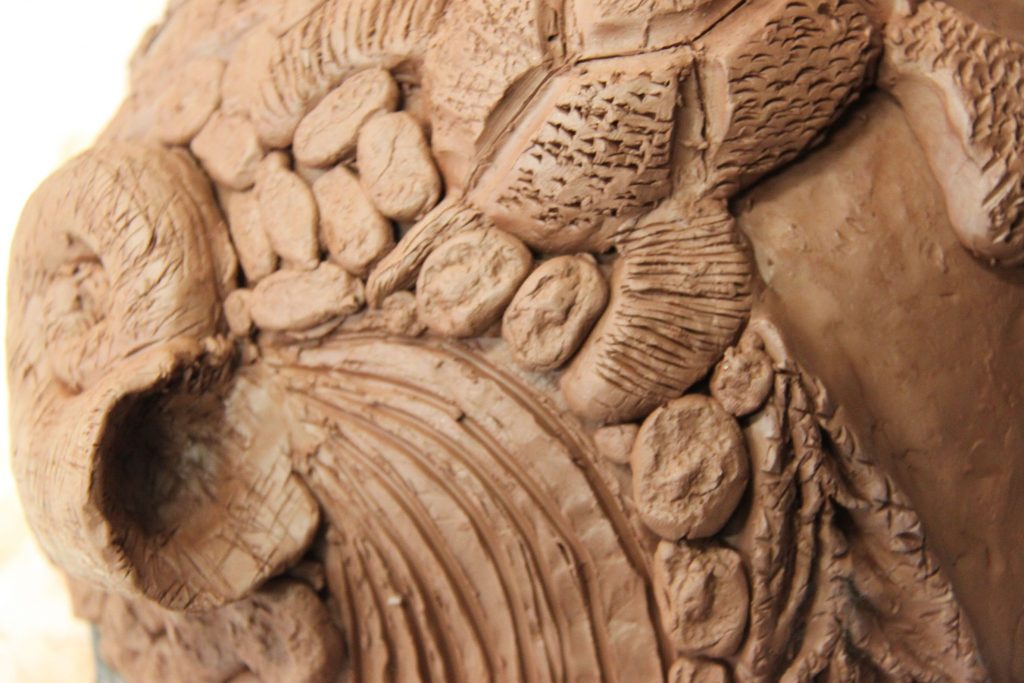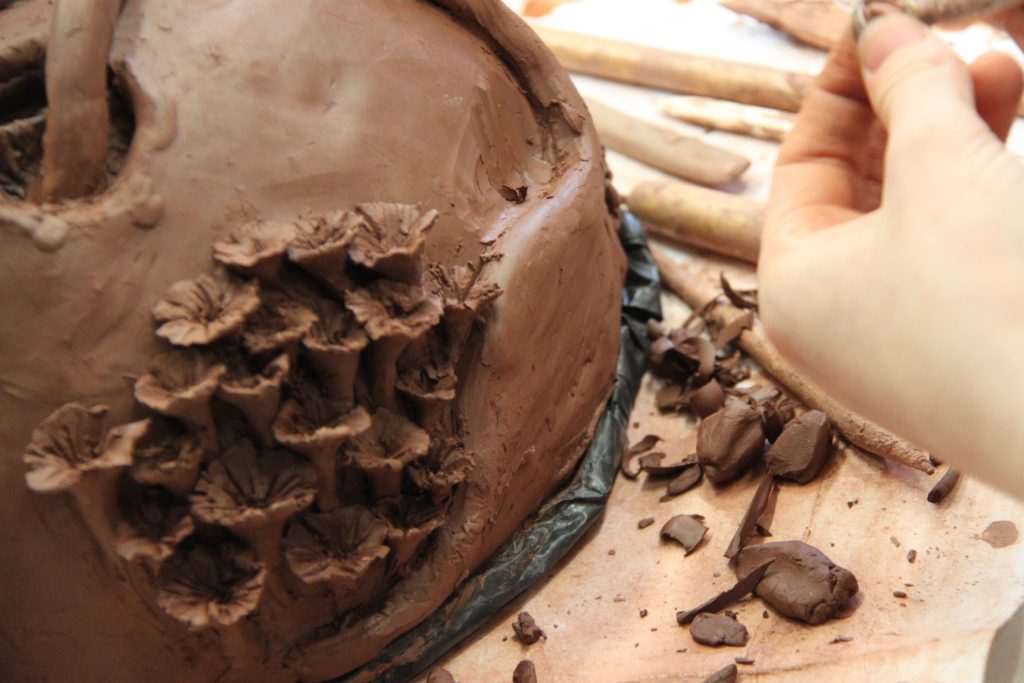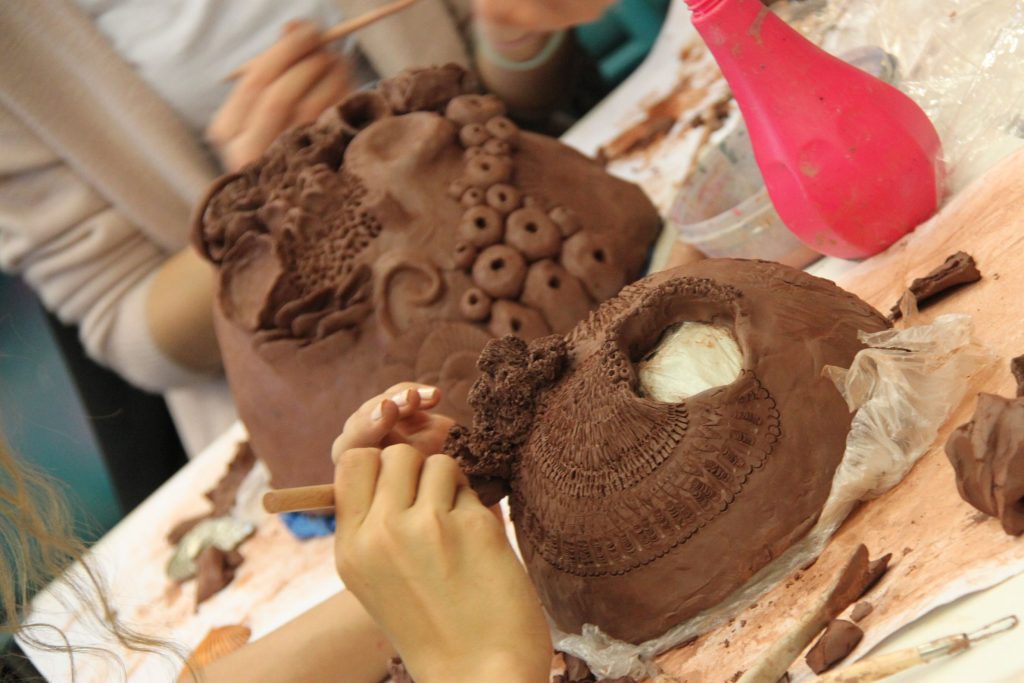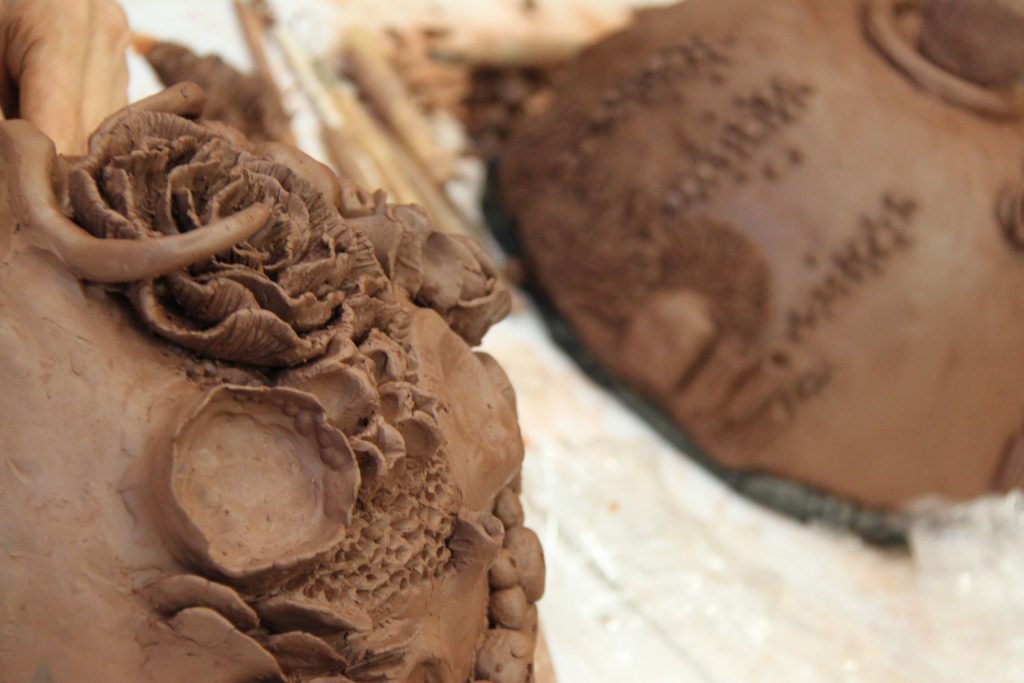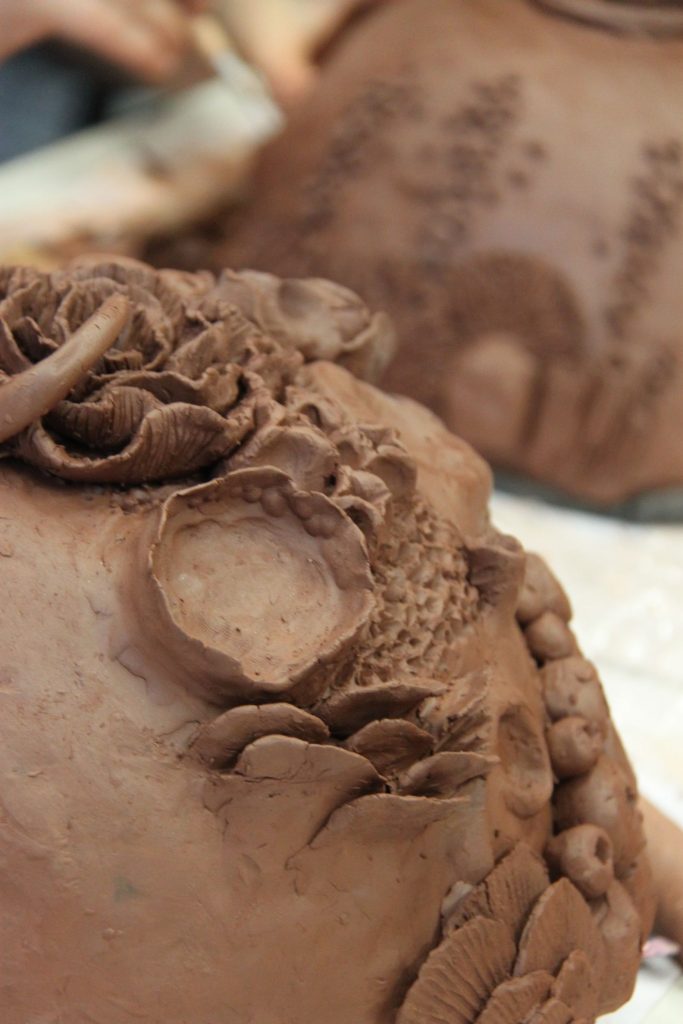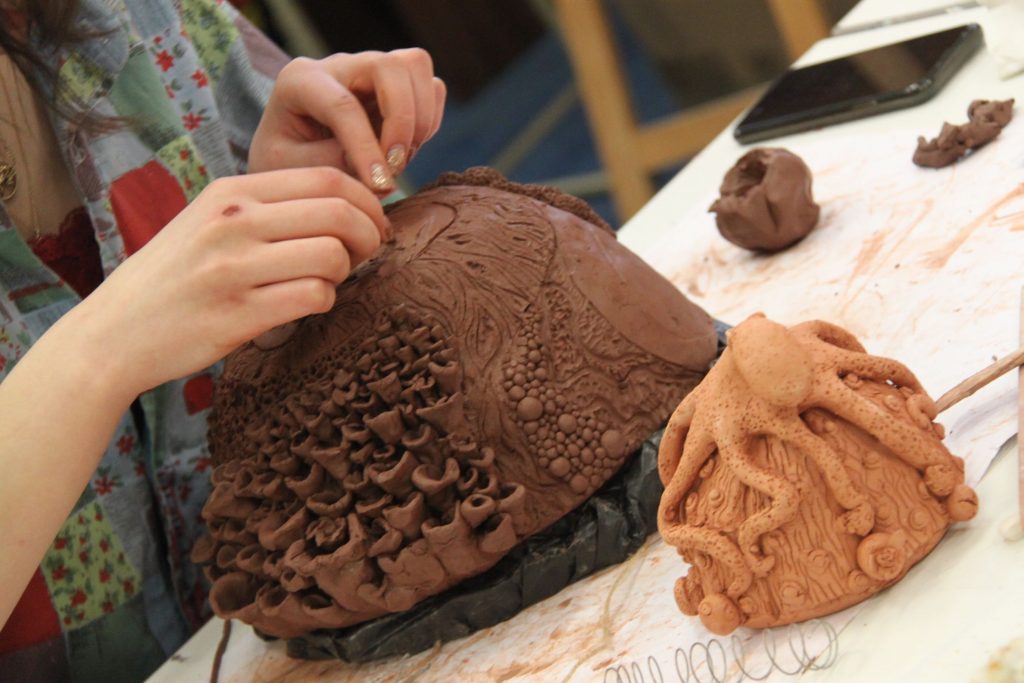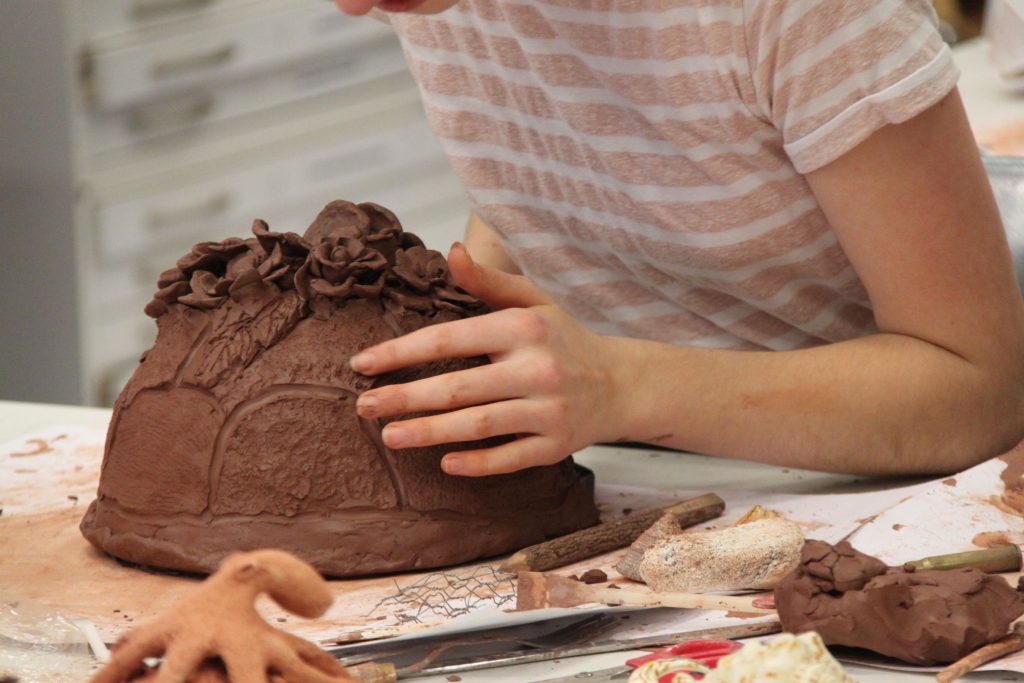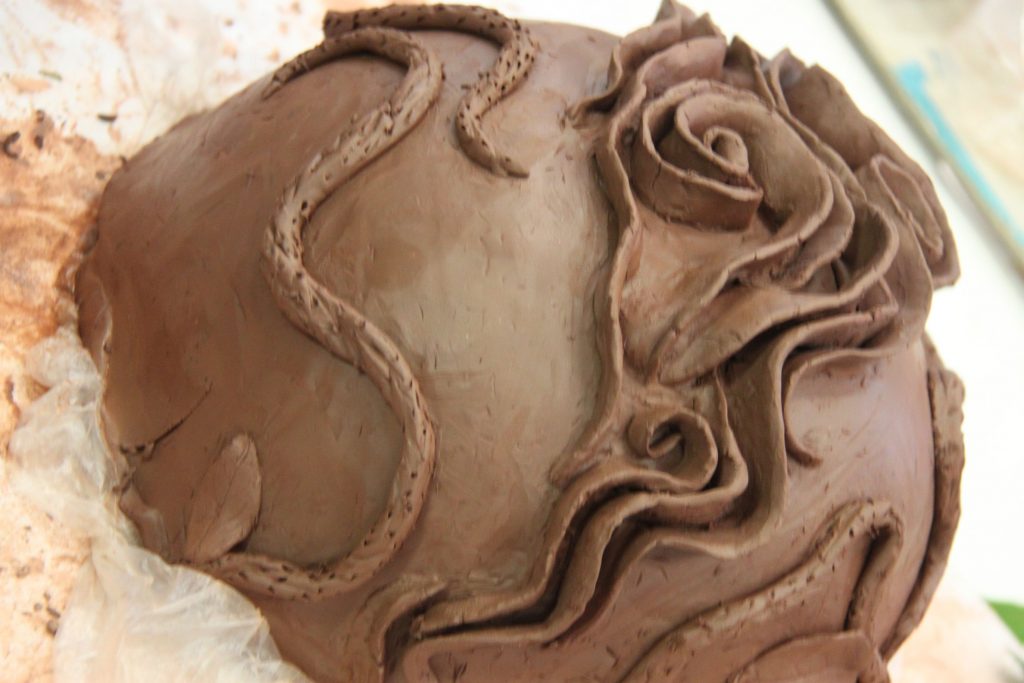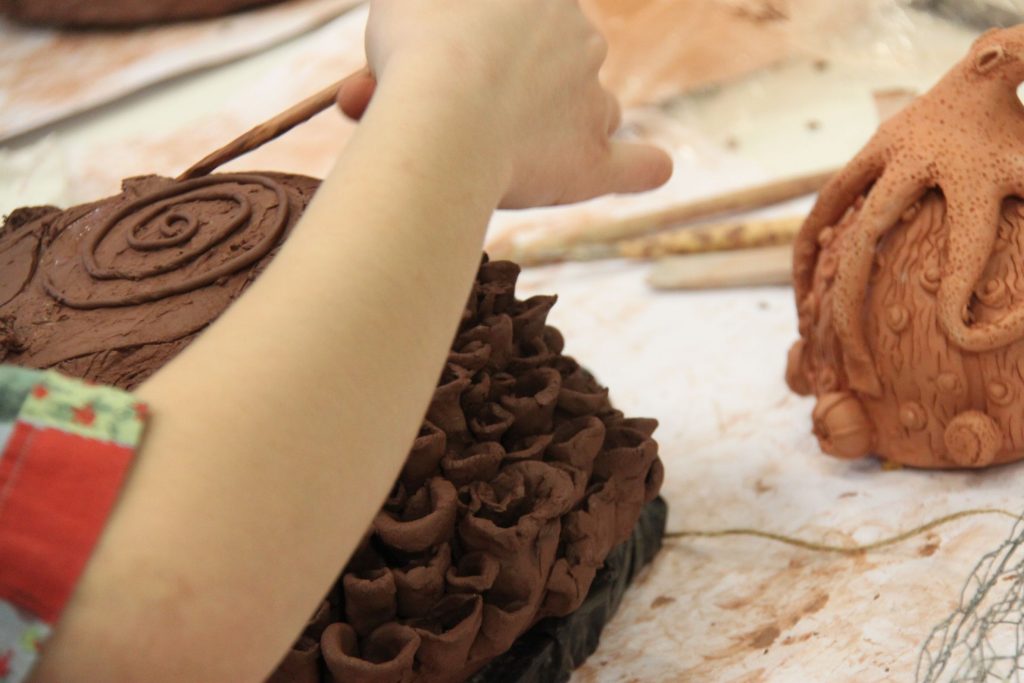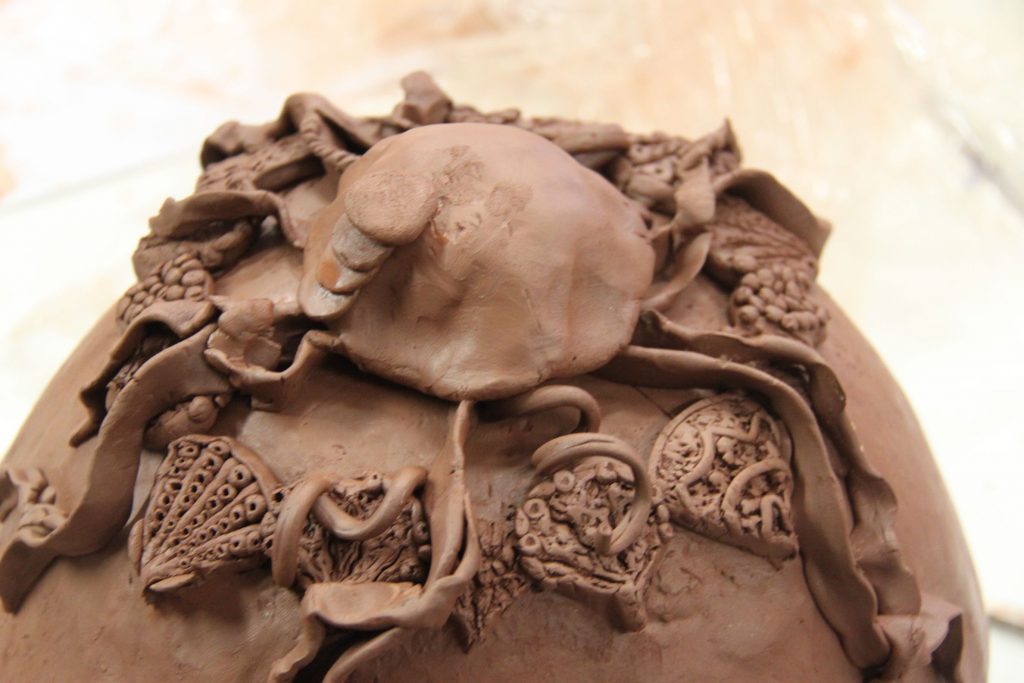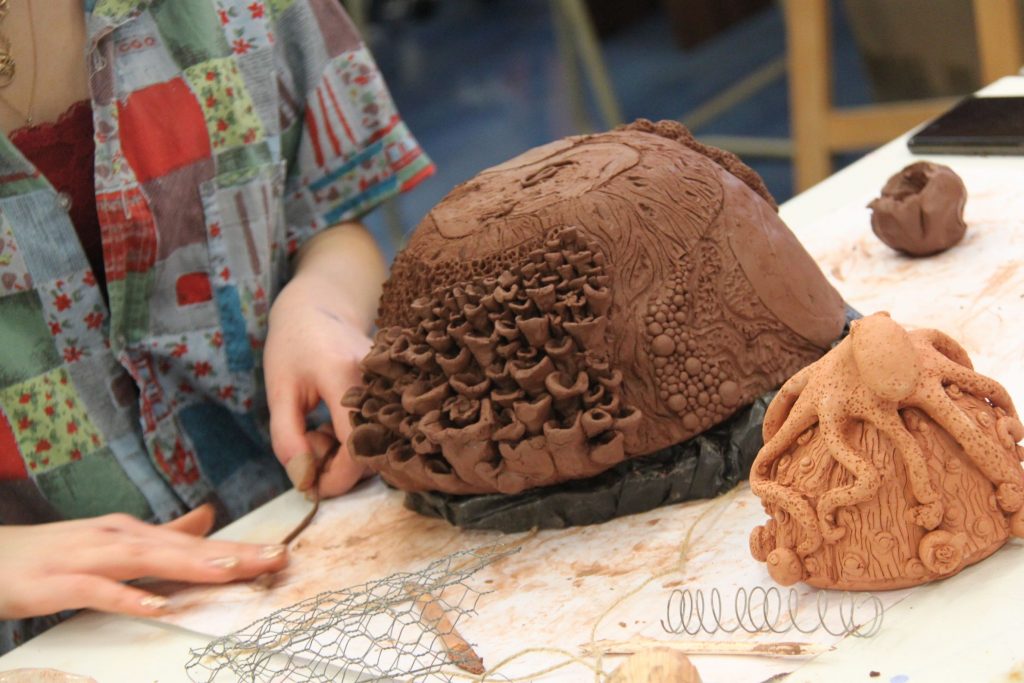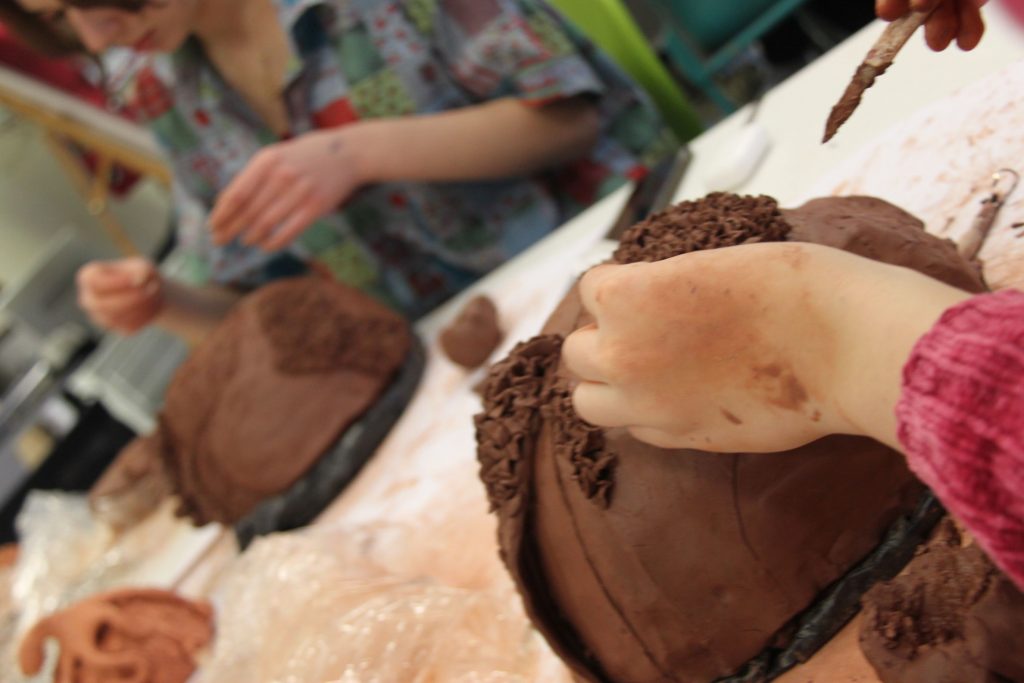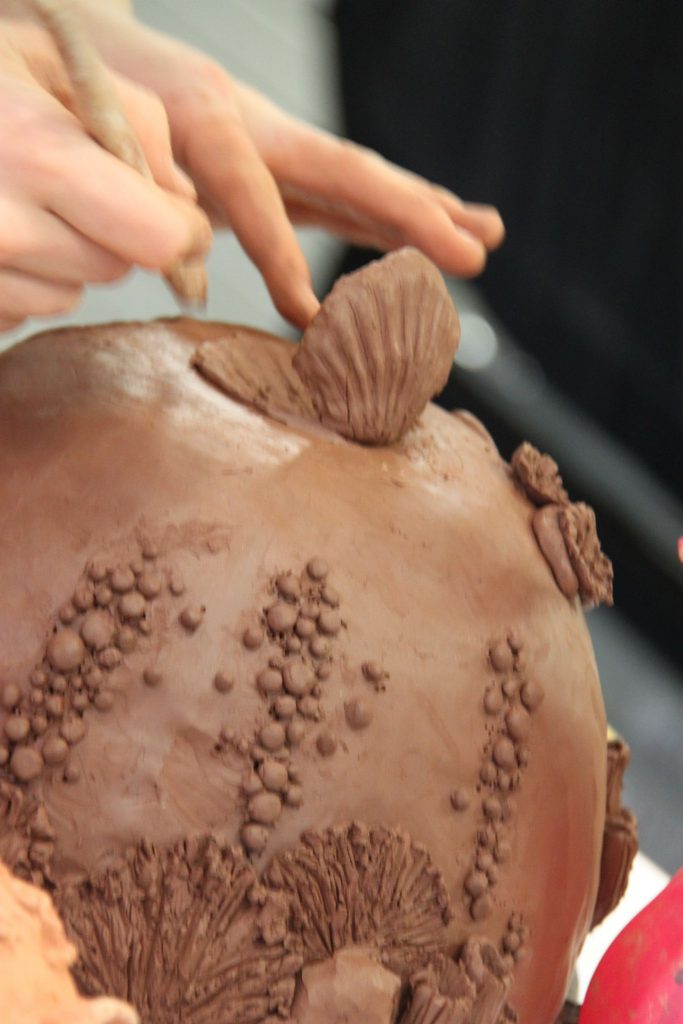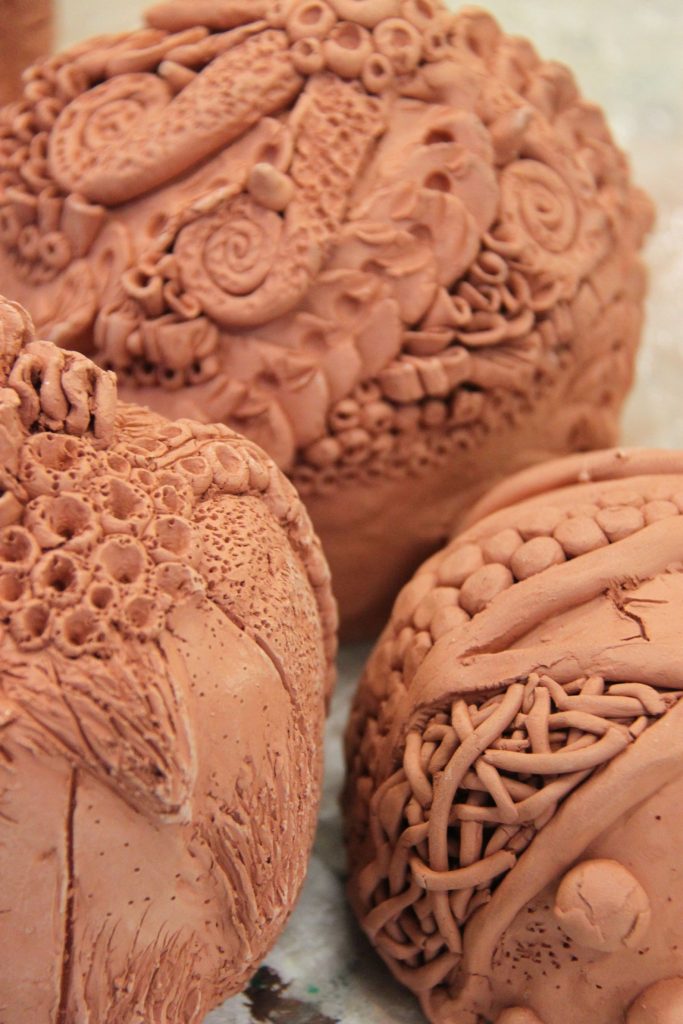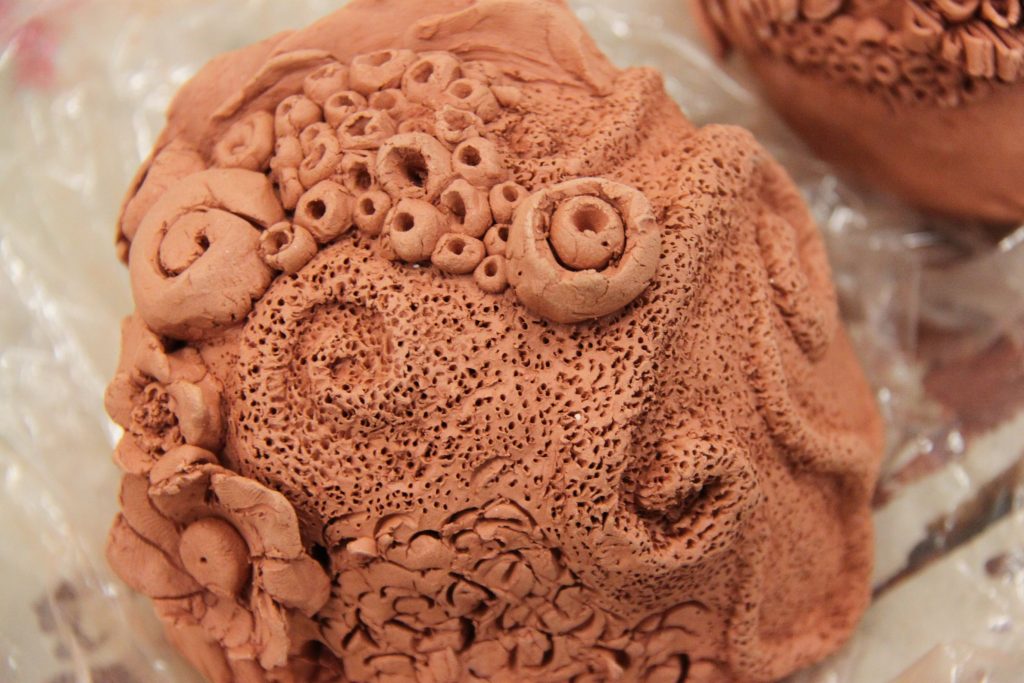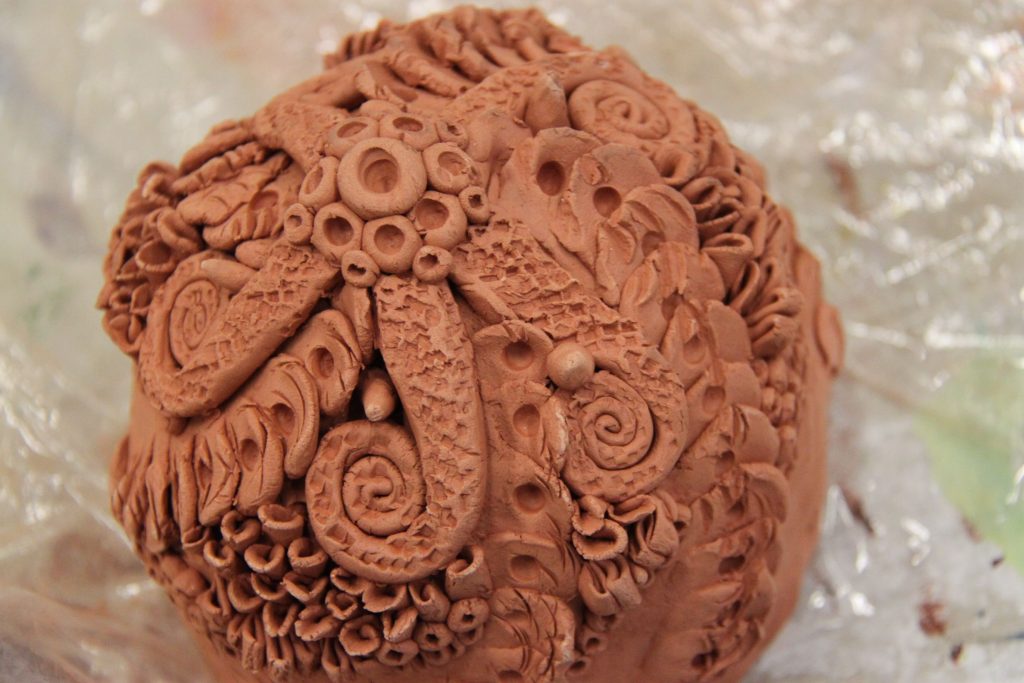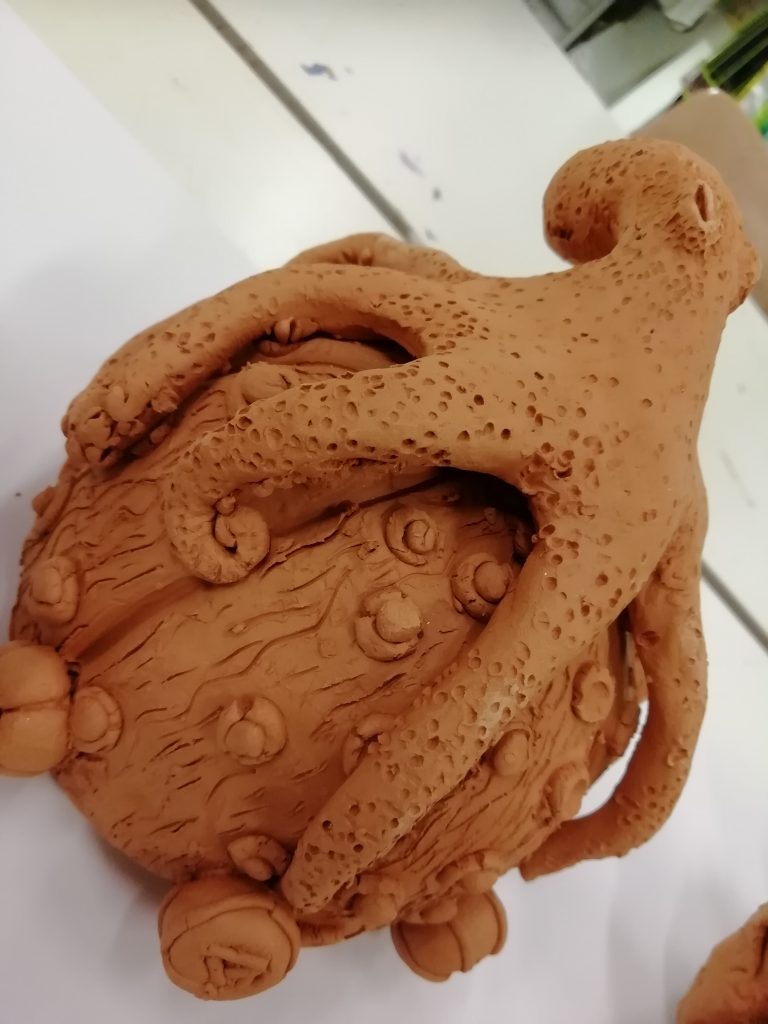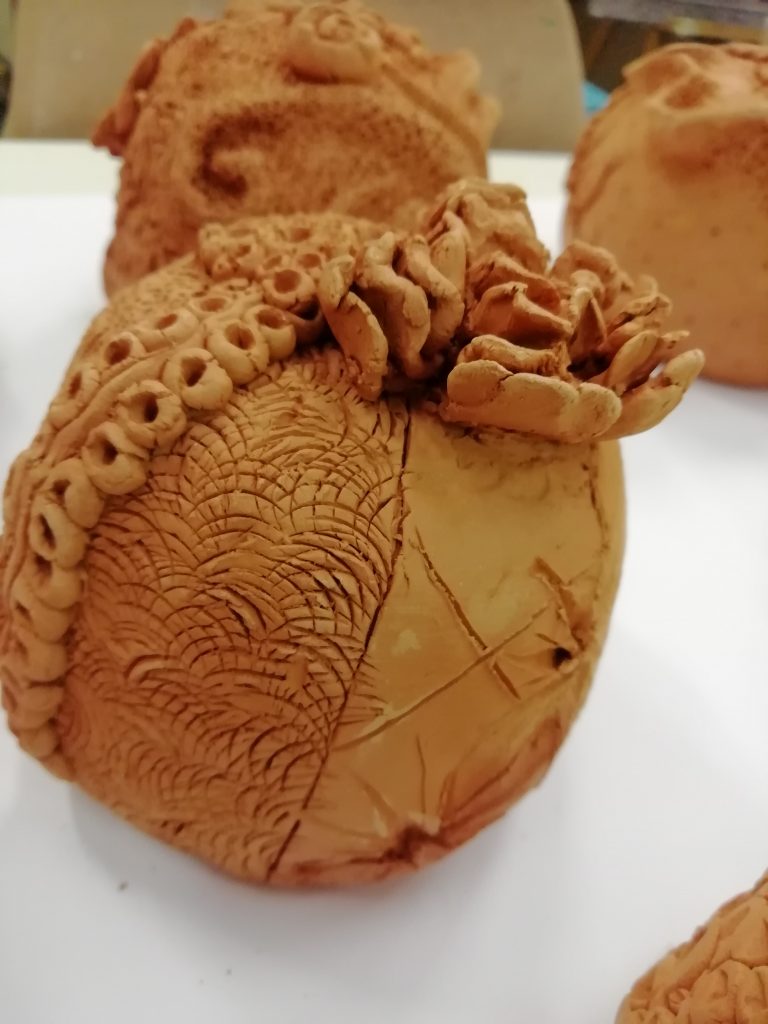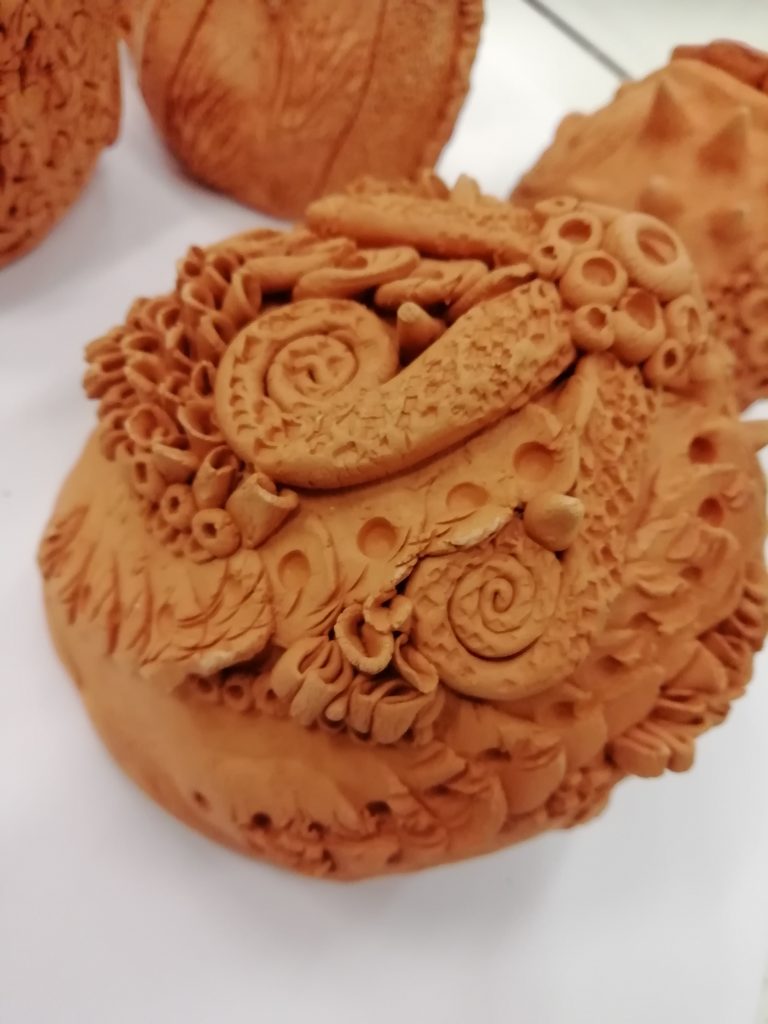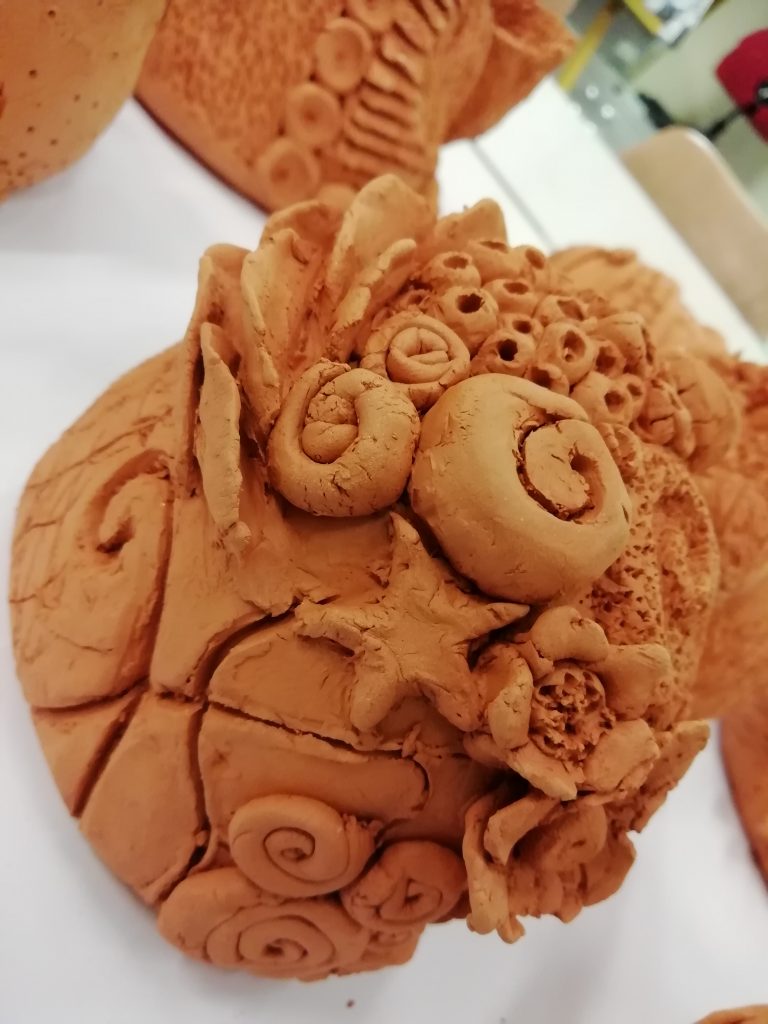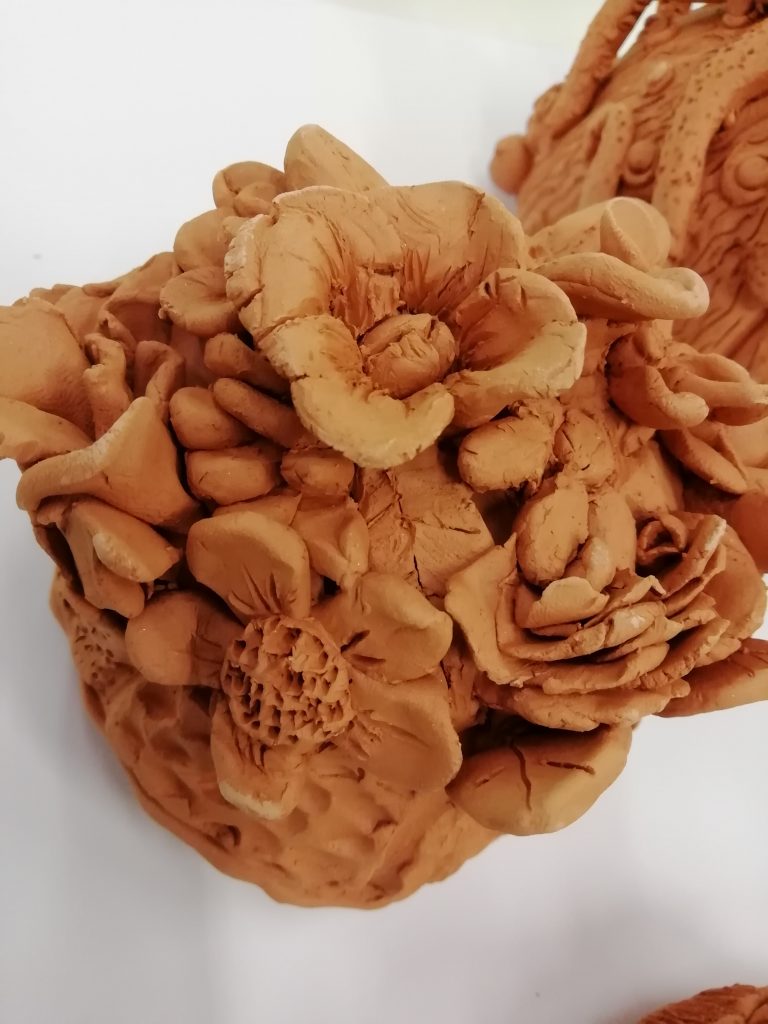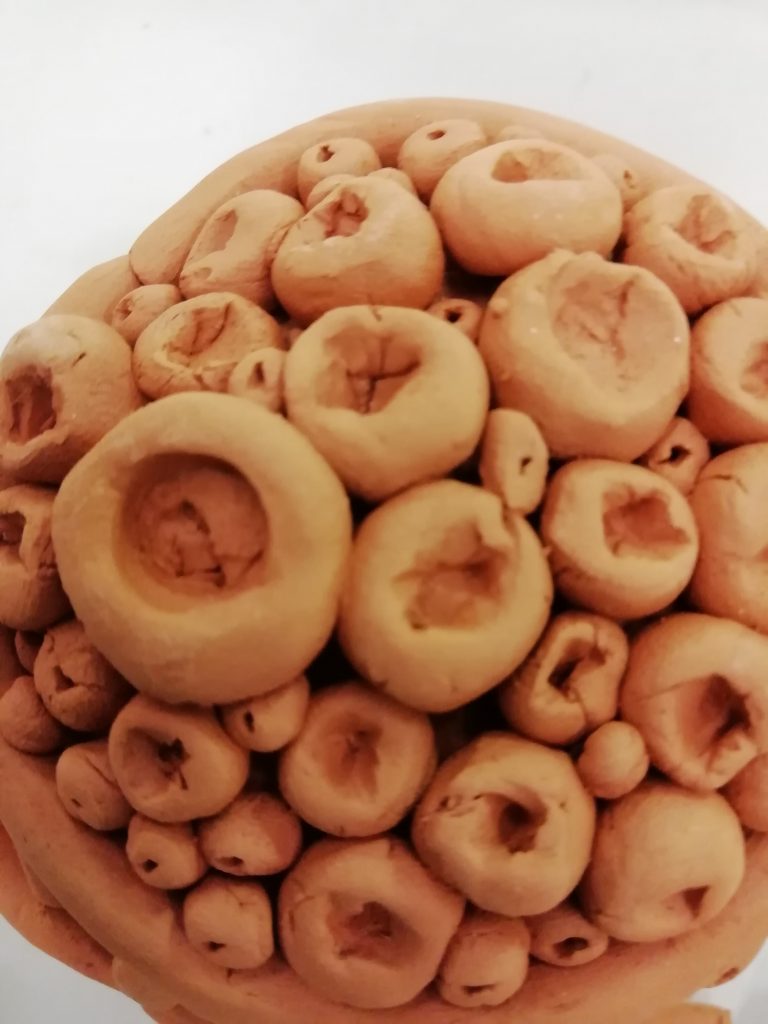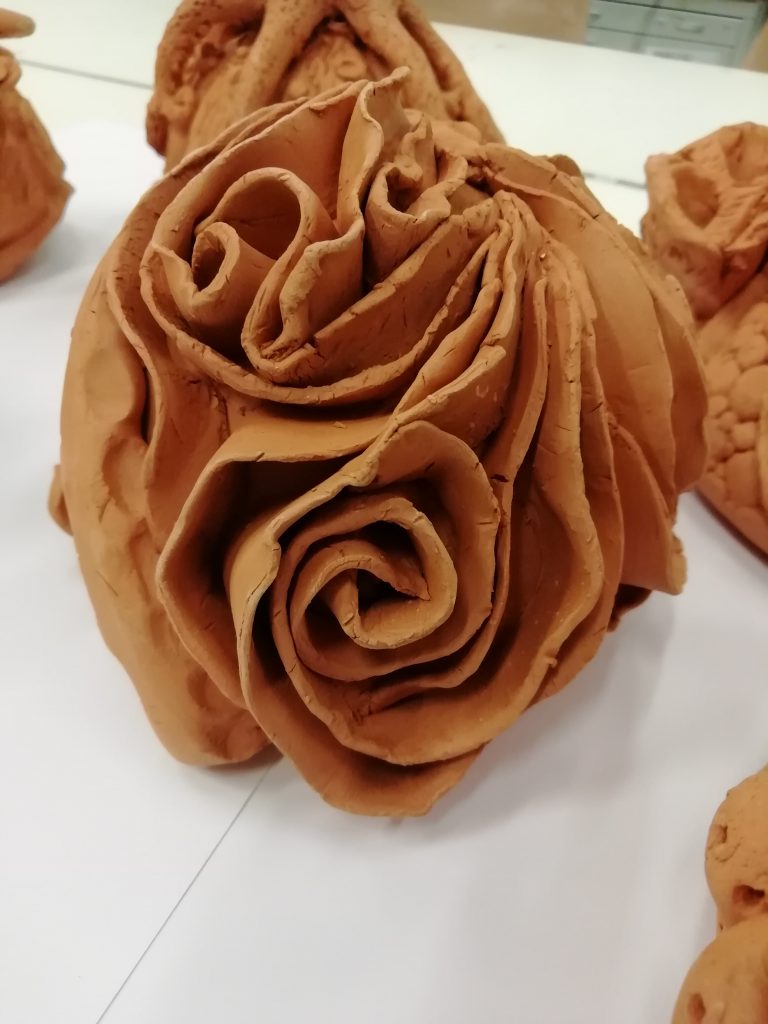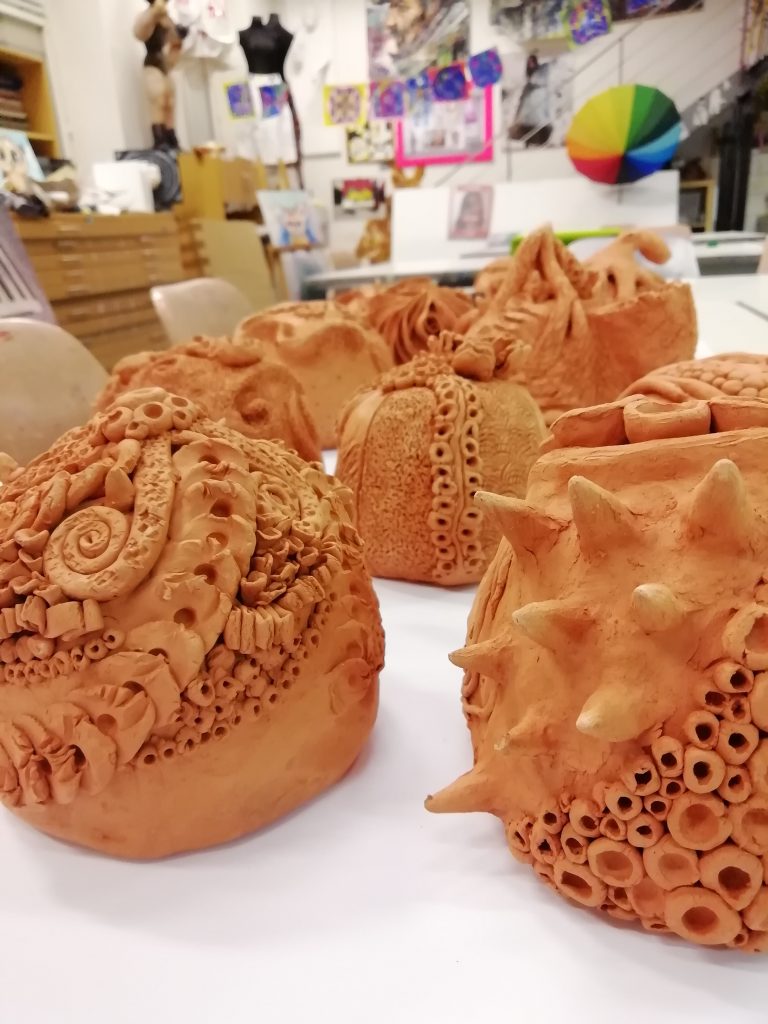Year 3 are exploring organic and natural form in the Ceramics class. Students are experimenting with a variety of techniques to build sculptures inspired the natural world. Scroll below for some impressive media handling techniques and highly imaginative work. The class developed skills and techniques on a small scale before tackling large, more ambitious pieces. We’ve also experimented with digital projection – lighting the sculptures with images of climate pollution – as we explore ideas for creating a group installation….
Sophie: Exploration of clay and creating sculptures has widened and developed my imagination, creativity, patience and skill. I have learned ways to ensure the model is eye-catching and became more confident in both of the techniques we have examined, additive – adding on to the surface, and subtractive – carving into the surface.
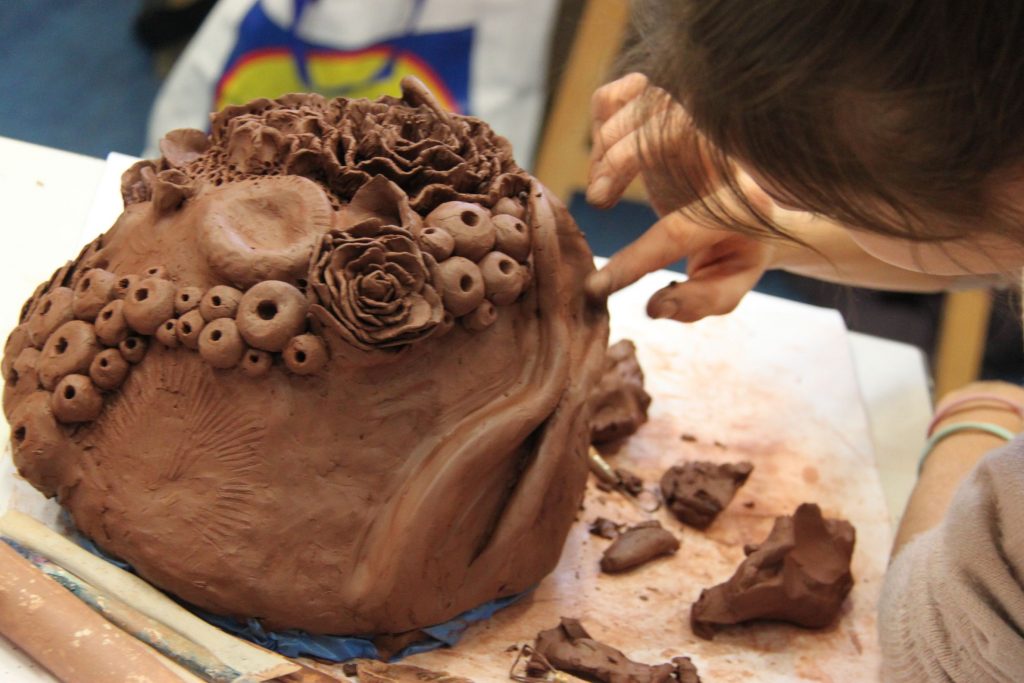
Tim: The ceramics unit opened up a new world for me. Previously, I had no advanced experience with clay but during these 6 months I learned so much handling skills, attention to detail and general 3D composition while working with natural and organic shapes as I had never before imagined I could achieve. I thank Ms Mac and my classmates for help and inspiration
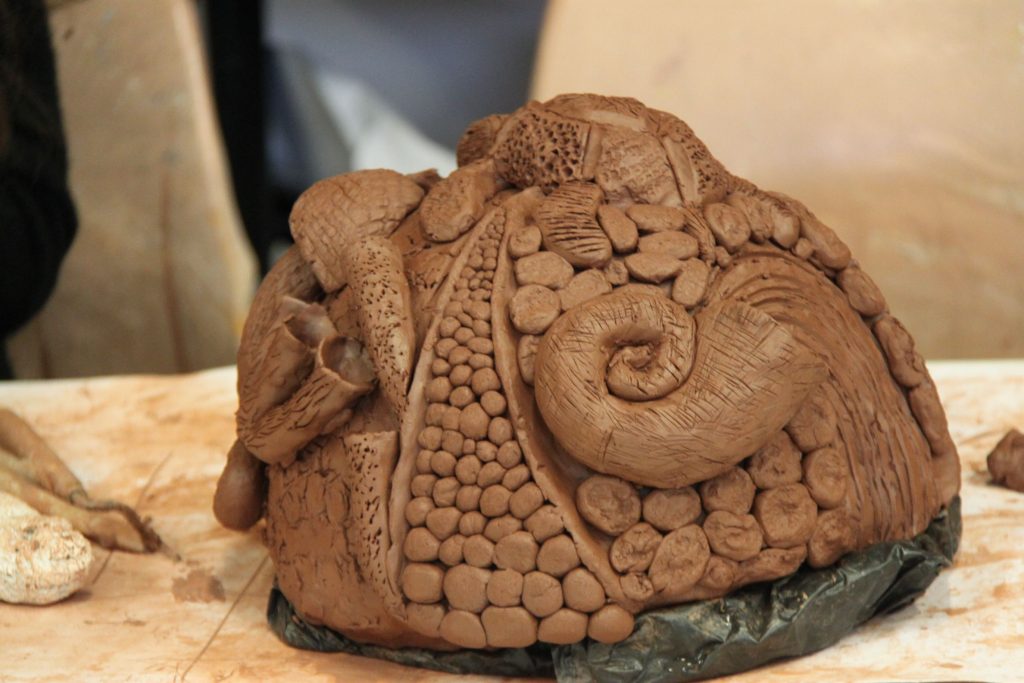
Emma: I’ve enjoyed doing our projects this year. Practicing on the smaller sculptures was helpful with developing the technique and creativity we used for our final ones. Working with the clay can be quite challenging but I’ve enjoyed this project a lotalot. The biggest problem I’ve had is creatively filling the spaces on such a large piece of work while trying to keep it be both naturally realistic and creative.

Liz: I see a huge progress in my work with clay. If I saw my final work in the beginning, when I wasn’t good with clay, I would never believe that I managed to make this. But now, after I’ve learned new techniques and practiced (a lot), I’m very proud of my work and see that it’s not that hard to make something beautiful from clay.
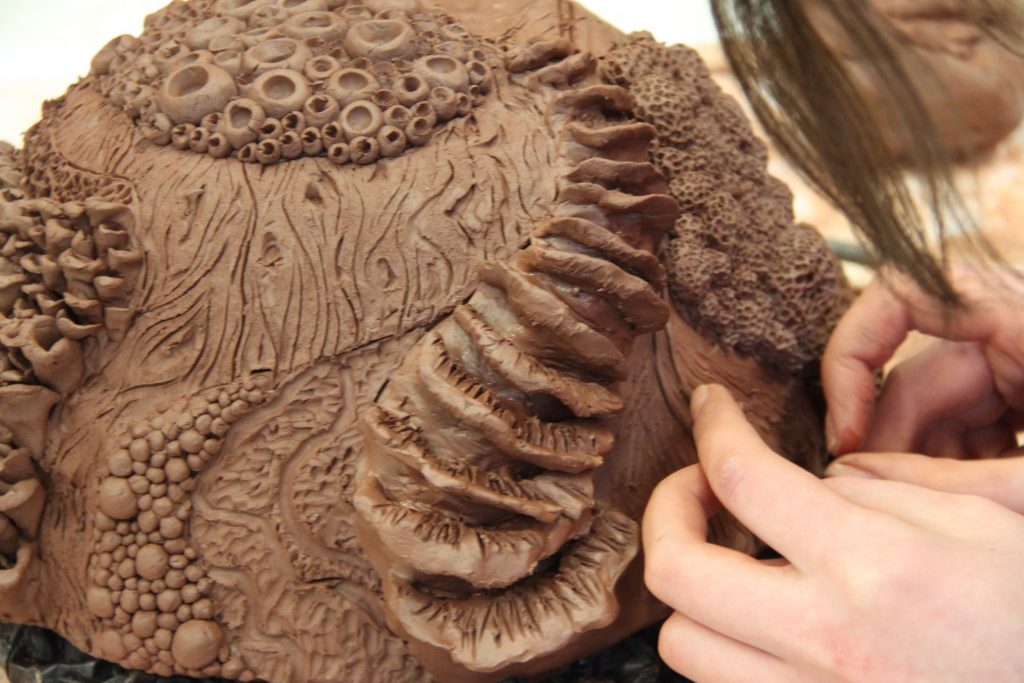
Varvara I have had some previous experience with ceramics, however before this year’s classes It was a distant topic for me. I had always felt a lack of confidence whenever I saw someone’s ceramic piece until I actually tried it during the lessons. Exploring the multiple techniques, such as the creation of textures or individual details with the use of subtractive and additive techniques, has certainly developed my handling skills as we moved from a smaller to a bigger scale. I feel like I started paying much more attention to the detail of my work. Although it is quite challenging to make sure that each piece is well attached, for everything to be stable before the firing. I also must point out that the overall understanding of composition is a huge improvement, as it became easier to imagine the whole picture and structure of the project. Looking back at the works of other artists that we‘ve discussed, I have a clearer vision of how everything had been done and It generally seems much easier than it did back then.

Marketa – For my ceramics project I decided to have my sculpture inspired by the depths of the ocean. I created tentacles and shells by additive technique and by subtractive technique I created texture and holes that represent caves and underwater details. I developed these techniques on a smaller scale when we were starting ceramics. These few weeks helped me to develop confidence and to see what style I prefer. The planning also provided me with inspiration that benefited me during the whole process as I tried to recreate some of the real creatures as well as explore my imagination. This freedom was a lot of fun but also very challenging as most of my inspiration was from my mind.
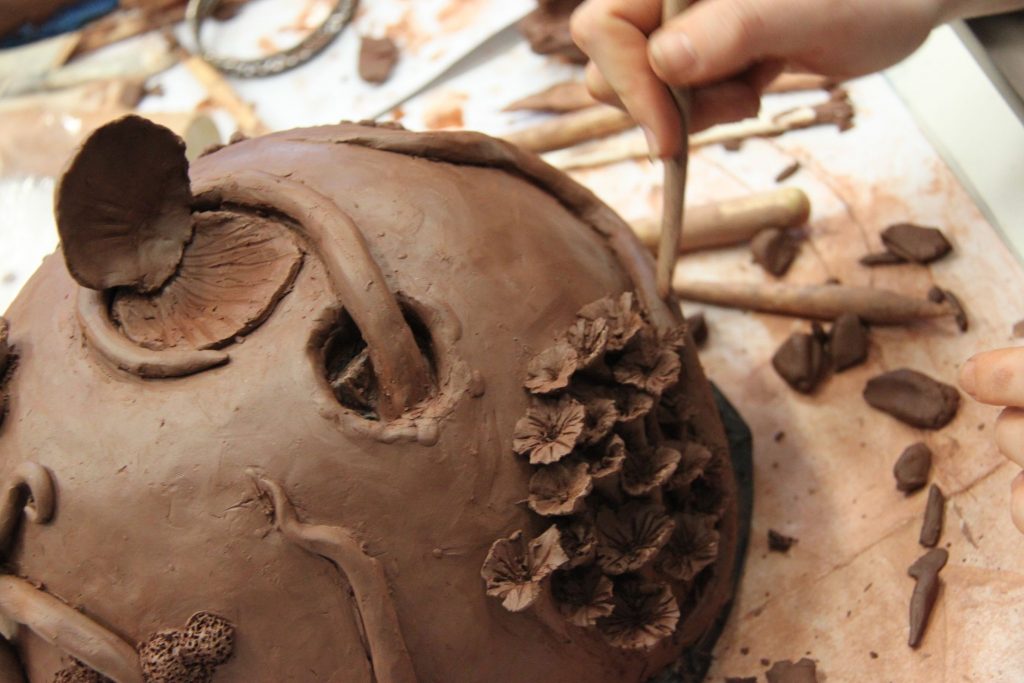
Maja – I think that my project is going well so far. I used most of the techniques in different ways to decorate my sculpture. When starting the smaller bowl I didn’t have an idea for it. That’s why I changed my design, and started again with a fresh idea. I think that the small sculpture gave me confidence in subtracting the clay; learning how much pressure I should use to make a dent, and forming the surface into the shape I want. I used the dent and cracks to mould it into a body of the ladybug. A bigger piece of clay was its head, and I made wings at the back where I cut the clay. Flowers grow from the dots to create circles. The flowers are not individual, but tightly put next to each other. The rest of the ladybugs ‘shell’ is dotted – a subtracting technique. The only smooth part is the head. I think that the biggest challenge was to work on a bigger scale; I like creating smaller pieces with not a lot detail, but if I put that to this larger piece it wouldn’t look nice. The body still has a simple design, but by using different techniques it gives it more texture. I used the rough areas and the irregularities to create the textured shape.
Anna – This year we largely focused our art lessons on the theme of the natural world. During lessons we were able to create wonderful pieces of art made from ceramics. The two main techniques, about which we have learned were the additive and subtractive techniques.
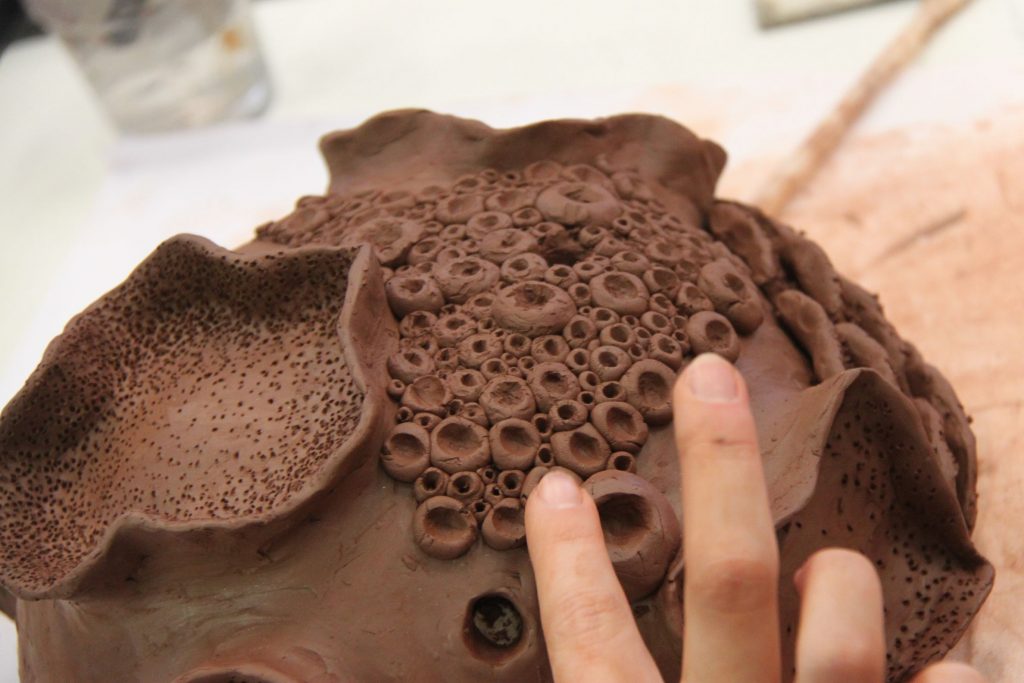
Eliska – I am quite pleased with how my project is going so far. Doing a smaller version of the final sculpture definitely helped me. I got to practice making the flowers, which are quite difficult to make, since they require precision and detail to look realistic. I think we have a lot of freedom, especially when we go on to do our final sculpture. The theme is nature, and since nature is so diverse, there is a lot of freedom to explore different aspects of it.
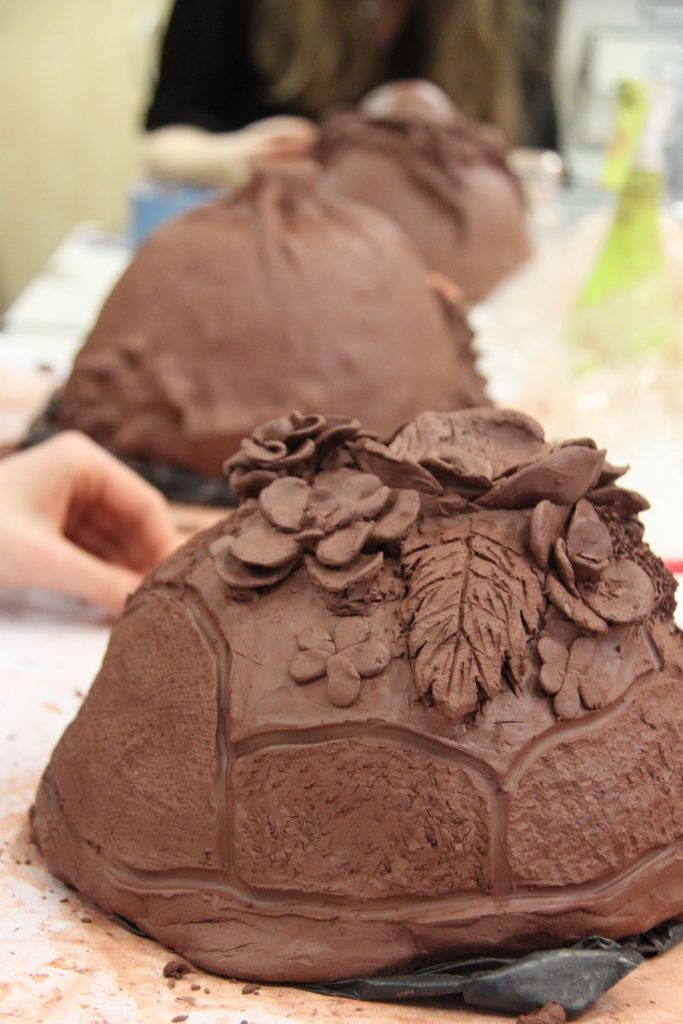
Emma G – I personally found it very useful to firstly practice on a smaller scale to develop further skills and try various techniques, both additive and subtractive, which we could later apply on the bigger scale to create a more complex and detailed sculpture. Working with clay was a little bit tricky in the beginning but when I learned the way how to work with it and what works the best for me, it suddenly became much easier to create some more natural-looking shapes for my sculpture.



Liz: I see a huge progress in my work with clay. If I saw my final work in the beginning, when I wasn’t good with clay, I would never believe that I managed to make this. But now, after I’ve learned new techniques and practiced (a lot), I’m very proud of my work and see that it’s not that hard to make something beautiful from clay.
Maja: I think that my project is going well so far. I used most of the techniques in different ways to decorate my bowl. When starting the smaller bowl I didn’t have an idea for it. That’s why i changed my design, and started again with a fresh idea. I think that the small sculpture gave me confidence in subtracting the clay. How much pressure i should use to make a dent, and forming the ball into the shape I want. When making the ball – the blanc surface of the clay, i used the dent and cracks to make it a body of the ladybug. A bigger piece of clay was its head, and i made wings at the back where i cut the clay. Flowers grow from the dots to create circles. The flowers are not individual, but tightly put next to each other. The rest of the ladybugs ‘shel’ is dotted – a subtracting technique. The only smooth part is the head. I think that the biggest challenge was to work on a bigger scale, I like creating smaller pieces with not a lot detail, but if I putted that to the ladybug it wouldn’t look nice. The body still has a simple design, but by using different techniques it gives it more texture. I used the unsmooth areas and the irregularities to create the shape.
